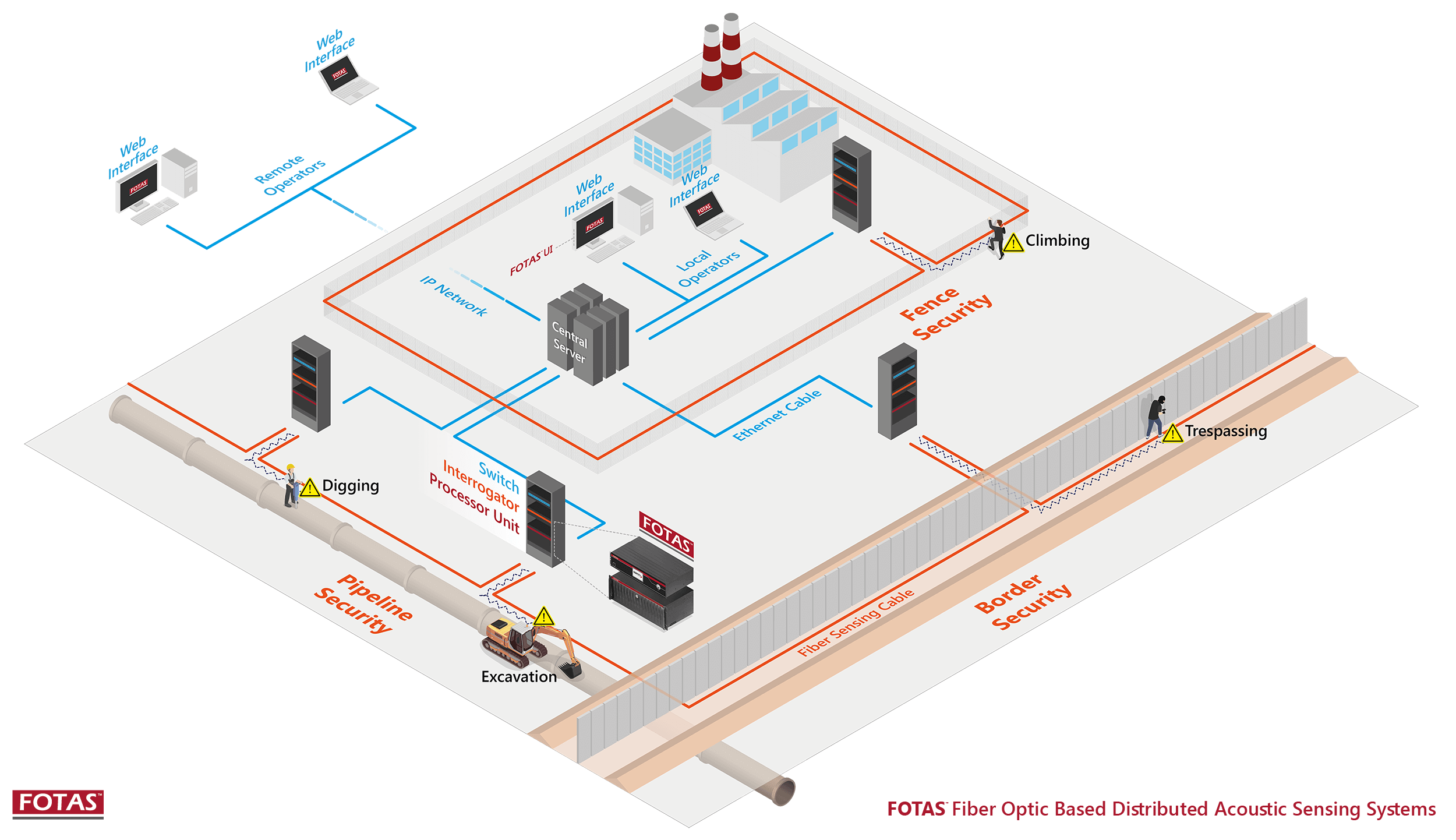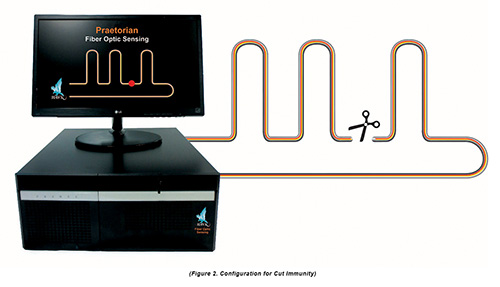How a Fiber Security System Provides Superior Reliability and Performance in Security Monitoring
How a Fiber Security System Provides Superior Reliability and Performance in Security Monitoring
Blog Article
Why Fiber Optic Protection Equipments Are the Future of Security
The shift to fiber optic protection systems marks a considerable improvement in the world of defense, driven by their exceptional data transmission capacities and resilience to external interferences. As the landscape of safety and security develops together with arising technologies such as AI and IoT, the capacity for fiber optics to enhance and redefine protection facilities becomes progressively noticeable.
Benefits of Fiber Optic Equipments
Among the primary advantages of fiber optic systems is their exceptional data transfer capability, which promotes the transmission of large volumes of information over cross countries without considerable loss. This characteristic is particularly advantageous for security applications that need the constant surveillance and transfer of high-definition video feeds, sensing unit information, and various other essential details. Optical fiber can suit the expanding needs of modern-day security systems, ensuring that data continues to be undamaged and reliable.
Furthermore, fiber optic cables are less at risk to electromagnetic disturbance, which can be a considerable problem in atmospheres with different electronic devices. This resistance enhances the stability of the data being sent, consequently lessening the threat of information violations or system failures. Moreover, fiber optic systems are naturally more safe than typical copper cables, as using a fiber optic line without discovery is extremely tough.
The longevity of fiber optic cords additionally adds to their appeal. They are resistant to ecological variables such as moisture and temperature variations, minimizing upkeep costs and enhancing system long life. In general, these advantages placement fiber optic systems as a robust and effective option for contemporary protection infrastructures, making sure dependable and safe and secure data transmission.
Improved Information Transmission Speed

The capability to transmit vast amounts of information quickly assists in the seamless integration of high-definition video feeds and advanced analytics. Security systems can now process and assess information in real-time, enhancing feedback times and situational understanding. Additionally, fiber optic connections support longer transmission distances without degradation of signal high quality, making them perfect for extensive safety and security networks.
The increased speed of fiber optic systems not only boosts the efficiency of safety and security procedures yet likewise reduces latency. This is especially vital in crucial circumstances where timely decision-making can stop protection violations or alleviate possible hazards. As organizations proceed to focus on security and performance, the demand for fast and trustworthy information transmission will undoubtedly strengthen fiber optic systems as a keystone of modern-day safety facilities.
Resistance to Interference
Fiber optic safety and security systems constantly show phenomenal resistance to electro-magnetic disturbance, a vital benefit in settings vulnerable to digital noise. Unlike typical copper cords, which can be negatively impacted by magnetic fields, radio regularity disturbance, and various other forms of electrical disruption, fiber optic cables make use of light to transfer data. This integral building makes sure that the signals stay clear and unchanged, no matter of surrounding digital activity.
Making use of glass or plastic fibers in fiber optic technology creates an obstacle versus disturbance, enabling reputable information transmission even in challenging situations such as industrial centers, urban locations with high electronic traffic, or areas near radio towers. This characteristic dramatically minimizes the likelihood of signal degradation or loss, making fiber optic systems particularly appropriate for safety and security applications where honesty and accuracy of data are vital.
Moreover, this resistance to disturbance Get More Information improves the total efficiency and integrity of safety and security systems, ensuring that monitoring and alert systems work perfectly. In a world where security is increasingly intimidated by innovative technologies, the strength of fiber optic systems sticks out as an essential attribute, reinforcing their condition as a crucial component of modern safety infrastructure.
Cost-Effectiveness Gradually
Considerable price savings can be attained over time with the implementation of fiber optic protection systems. While the initial financial investment might appear higher compared to standard copper-based systems, the long-term financial benefits come to be noticeable with lowered functional and maintenance expenses (fiber security). Fiber optic wires are inherently Web Site extra long lasting and much less at risk to environmental variables, which translates to reduce substitute and repair expenses over their lifespan
Additionally, fiber optic systems call for much less power to run, which additionally reduces power prices. Enhanced information transmission capabilities enable fewer repeaters and amplifiers, reducing equipment financial investment and improving installation processes. The scalability of these systems also adds to cost-effectiveness, as companies can expand their safety infrastructure without sustaining considerable added expenses.
An additional aspect to take into consideration is the increased performance in tracking and reaction capabilities that fiber optics provide. Boosted real-time information transmission can result in quicker occurrence feedback times, potentially mitigating losses and liabilities connected with protection violations. Altogether, the lasting advantages of fiber optic protection systems not just warrant the initial expense however likewise position them as a financially prudent choice for organizations looking for robust protection services.

Future Advancements in Safety
Advancing technologies are established to revolutionize security systems, integrating fabricated knowledge (AI) and artificial intelligence to improve threat discovery and feedback capabilities. These developments will enable safety and security systems to analyze vast amounts of information in real-time, recognizing patterns and abnormalities that indicate potential risks. This proactive method will make it possible for much faster decision-making and extra reliable incident reactions.
In addition, the consolidation of the Internet of Things (IoT) is leading the method for interconnected protection devices, offering extensive security and monitoring. Smart sensing units can pass on information regarding environmental changes, while automated signals can alert safety and security workers promptly of suspicious tasks.
Additionally, the development of biometric technologies will certainly further strengthen safety systems. Facial acknowledgment, finger print scanning, and retina recognition are coming to be a lot more advanced, offering layers of verification that are tough to bypass.
Final Thought
Finally, fiber optic security systems represent a substantial innovation in defense modern technology, using unparalleled information transmission rate, resistance to electromagnetic interference, and long-term cost-effectiveness. As the demand for advanced security remedies continues check out this site to expand, the integration of optical fiber with arising innovations such as AI, IoT, and biometrics will certainly better enhance safety and security infrastructures (fiber security). The mix of these advancements will make certain a more safe and receptive setting, solidifying fiber optics as a foundation of future security systems
Report this page